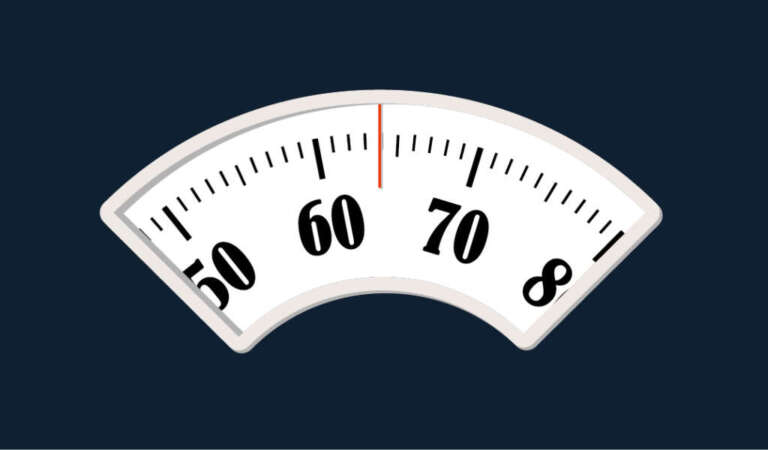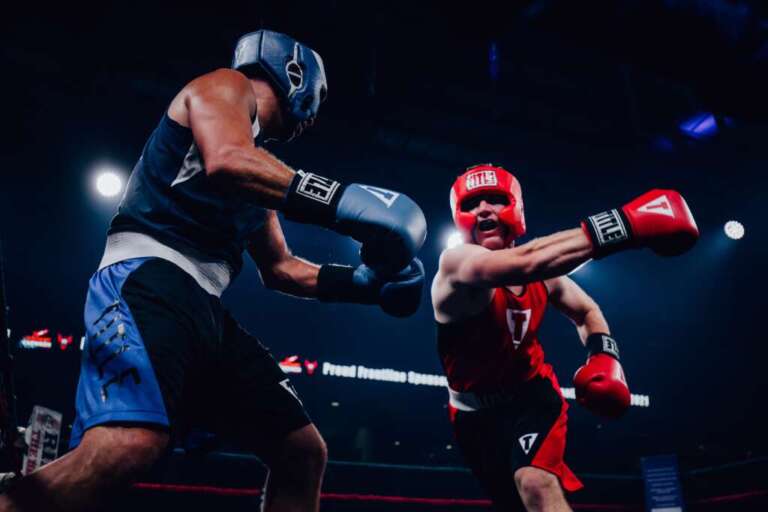Boxing weight classes: The boxing weight classes simply explained

In professional as well as olympic boxing there are different weight classes. Why are there these different boxing weight classes and how are they called, we will answer in the following lines. In addition, you will know exactly which weight class you are currently in.

Why are there different boxing weight classes?
The different boxing weight classes exist primarily to allow the fight to be as balanced as possible in terms of weight. It is obvious that a boxer who boxes in a weight class up to 60 kg has less punch force than an athlete who competes in a weight class over 91 kg.
With the different weight classes, the advantage of weight or punch force is minimized. Many boxers therefore try to reduce their weight so that they are classified in a lower weight class, for example, to build up a reach advantage. This is also known as “making weight”.

How many boxing weight classes are there?
Boxing weight classes can be divided by gender as well as by professional or olympic boxer. Thus, there are different weight classes.
In olympic boxing alone, there are up to eleven different weight classes – for men and women. These range from half flyweight to super heavyweight.
| Weight classes | Men | Women |
| Light flyweight | 46 to 49 kg | 45 to 48 kg |
| Flyweight | up to 52 kg | up to 51 kg |
| Bantamweight | up to 56 kg | up to 54 kg |
| Featherweight | – | up to 57 kg |
| Lightweight | up to 60 kg | up to 60 kg |
| Light welterweight | up to 64 kg | up to 64 kg |
| Welterweight | up to 69 kg | up to 69 kg |
| Middleweight | up to 75 kg | up to 75 kg |
| Light heavyweight | up to 81 kg | up to 81 kg |
| Heavyweight | up to 91 kg | up to 81 kg |
| Super heavyweight | over 91 kg | – |

In professional boxing there are even more weight classes than in olympic boxing. Here there are 18 different weight classes where very precise weight values with one decimal place are important.
| Weight classes | Men | Women |
| Half strawweight | – | up to 46,3 kg |
| Strawweight | up to 47,6 kg | up to 47,6 kg |
| Light Flyweight | up to 49 kg | up to 49 kg |
| Flyweight | up to 50,8 kg | up to 50,8 kg |
| Super Flyweight | up to 52,2 kg | up to 52,2 kg |
| Bantamweight | up to 53,5 kg | up to 53,5 kg |
| Super Bantamweight | up to 55,5 kg | up to 55,2 kg |
| Featherweight | up to 57,5 kg | up to 57,2 kg |
| Super Featherweight | up to 59 kg | up to 59 kg |
| Lightweight | up to 61,2 kg | up to 61,2 kg |
| Super Lightweight | up to 63,5 kg | up to 63,5 kg |
| Welterweight | up to 66,7 kg | up to 66,7 kg |
| Super Welterweight | up to 69,9 kg | up to 69,9 kg |
| Middleweight | up to 72,6 kg | up to 72,6 kg |
| Super Middleweight | up to 76,2 kg | up to 76,2 kg |
| Light Heavyweight | up to 79,7 kg | up to 79,7 kg |
| Cruiserweight | up to 90,7 kg | – |
| Heavyweight | over 90,7 kg | over 79,7 kg |
If you want to know which is your current weight class, you must of course first know how heavy you are. After you have determined your weight, you can simply have a look in the respective table and you already know your weight class in boxing.